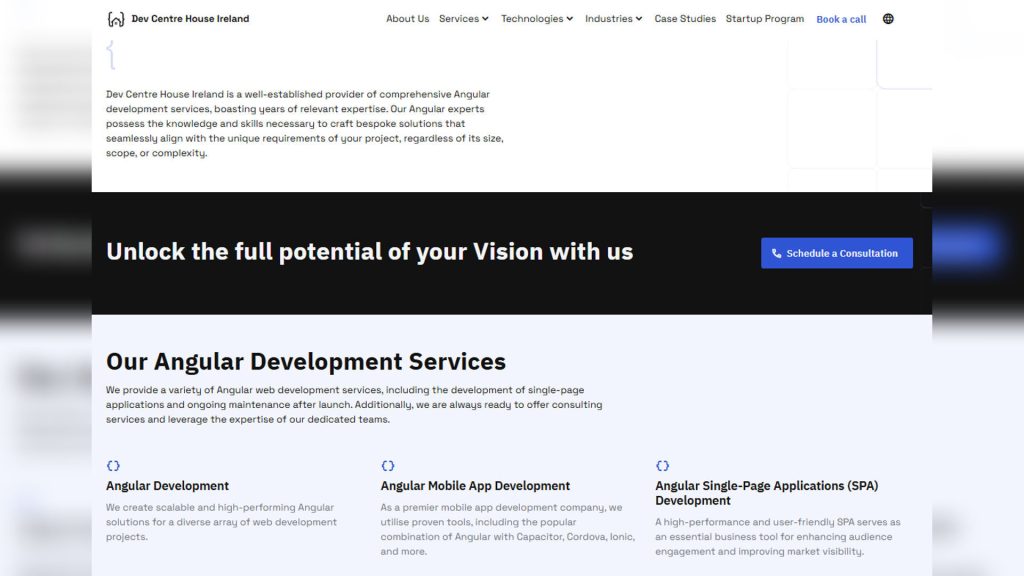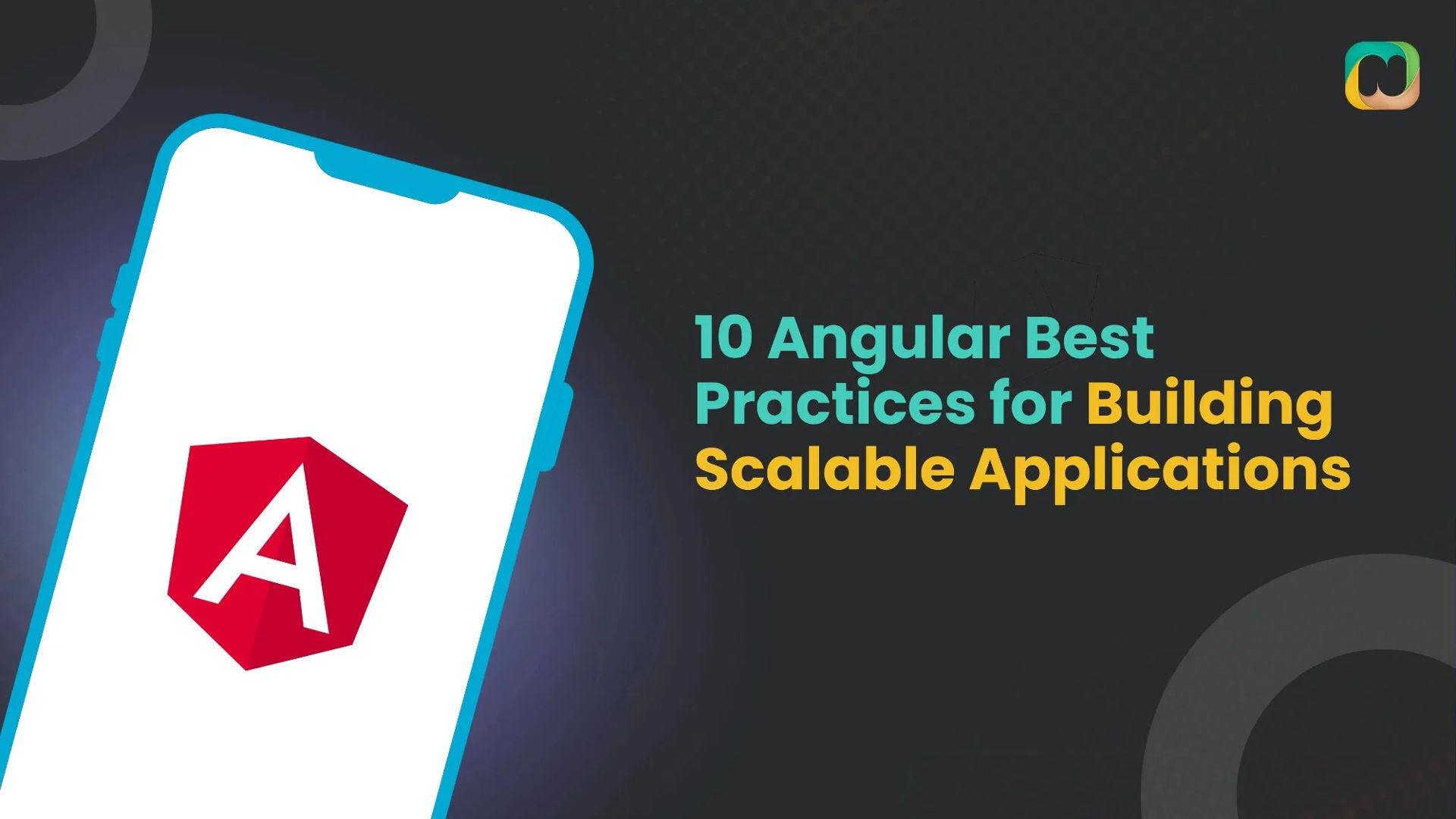Angular is one of the most popular frameworks for building dynamic and scalable web applications. When developing large-scale Angular applications, it’s essential to follow best practices to ensure your app remains maintainable, efficient, and scalable over time. This guide will walk you through the key best practices to follow when building scalable Angular applications.
Why Scalable Angular Applications Matter
Building scalable applications is critical when developing web apps that are expected to grow over time. As your project expands, so does the complexity of your codebase. Scalable Angular applications allow for better maintainability, improved performance, and more efficient collaboration between developers.
Best Practices for Building Scalable Angular Applications
1. Use a Modular Architecture
A modular architecture is crucial when working on large Angular projects. It allows you to divide your app into smaller, reusable, and maintainable modules. Each module should focus on a specific feature or functionality. Angular’s modularity ensures that you can break down your application into smaller chunks, which makes it easier to test, maintain, and scale.
- Feature Modules: Group related components, services, and other code into feature modules to avoid having a bloated app module.
- Core Module: The core module should contain singleton services (like authentication services) and be imported once in the
AppModule. - Shared Module: This module can contain reusable components, directives, and pipes shared across different modules in your app.
Example:

2. Lazy Loading
Lazy loading is an essential technique for building scalable Angular applications. It allows you to load specific parts of your application only when they are needed, rather than loading everything upfront. This improves the performance and reduces the initial load time.
You can implement lazy loading in Angular by configuring routes to load feature modules on demand:

3. Use Strongly Typed Services
In large applications, services are often responsible for managing data and business logic. Using strongly typed services ensures type safety and makes it easier to work with complex data structures.
Example:

By defining strong types like User, TypeScript can help catch type-related errors during development, making your app more maintainable and reducing runtime errors.
4. Effective State Management
As your Angular application grows, managing state efficiently becomes critical. Use state management libraries like NgRx or Akita to manage and centralize the state of your application.
These libraries make it easier to:
- Track the application’s state
- Handle actions that modify the state
- Ensure consistency and immutability
Example with NgRx:

5. Ensure Proper Component Design
When building large-scale Angular applications, maintaining a clean component design is essential. Components should be small, focused on a single responsibility, and easy to test.
- Dumb Components: Create reusable, presentational components that only handle the display logic and are stateless.
- Smart Components: These are container components responsible for managing business logic, state, and data passing to dumb components.
Example:

6. Avoid Logic in Templates
While it might be tempting to put logic directly into templates, it’s a best practice to avoid doing so, especially in larger applications. Instead, move logic to the component class, where it can be easily tested and maintained. This leads to cleaner, more readable templates and better performance.
Bad Example:

Good Example:

7. Use TrackBy for ngFor Loops
When rendering large lists of data with *ngFor, Angular can become inefficient if it needs to re-render the entire list on each change. Using the trackBy function helps Angular identify which items have changed and optimize the DOM updates.
Example:


8. Optimize Change Detection
Angular’s change detection mechanism is powerful but can become a performance bottleneck in large applications. To optimize it:
- OnPush Change Detection Strategy: Use the
ChangeDetectionStrategy.OnPushstrategy to tell Angular to check the component only when input properties change, rather than every time something changes in the component tree.

9. Lazy Load Stylesheets
Large applications often come with numerous styles. To optimize performance, lazy load stylesheets only when necessary, rather than loading them upfront.

10. Write Unit Tests and End-to-End Tests
Testing is crucial to ensure your Angular application remains stable as it scales. Write unit tests for components, services, and state management. For end-to-end testing, use Protractor or Cypress.
Ensure that your tests:
- Validate component interactions
- Test business logic in services
- Check routing and other critical workflows

Wrapping-Up

Building scalable Angular applications requires careful planning and implementation of best practices. By following these best practices such as using a modular architecture, lazy loading, proper state management, and optimizing performance you can ensure that your application remains maintainable, efficient, and ready for future growth.
Start implementing these strategies in your Angular projects today, and watch your applications thrive as they scale to meet the demands of users.
FAQ
Question: What types of projects are ideal for Angular applications?
Answer: Angular is well-suited for large-scale web apps like enterprise dashboards, CRMs, and e‑commerce platforms where modularity, maintainability, and performance are essential. Dev Centre House Ireland builds such projects using Angular to align with complex business needs.
Question: Why is component-based design important in Angular projects?
Answer: Component-based design promotes reusable, self-contained code blocks that simplify development and testing. Dev Centre House Ireland structures Angular apps into modular components to ensure scalability and easier maintenance.
Question: How does Angular facilitate state management?
Answer: Angular uses services and RxJS for reactive state management across components. At Dev Centre House Ireland, we implement consistent state flows to make data handling reliable and predictable.
Question: Can Angular help with code organization in large projects?
Answer: Yes, through feature-based NgModules, lazy loading, and routing. Dev Centre House Ireland structures Angular codebases in a modular way to keep large projects clean and easy to maintain.
Question: How does Angular enhance performance?
Answer: With tools like Ahead-of-Time (AOT) compilation, tree shaking, and lazy loading, Angular builds fast, optimized apps. Dev Centre House Ireland applies these practices to ensure high-performance user experiences.
Question: What backend integrations are common in Angular apps?
Answer: Angular frequently connects to REST APIs, GraphQL endpoints, WebSocket services, and Microservices. Dev Centre House Ireland ensures secure, reliable integration with backend systems to support real-time data and scalable architectures.
Question: How do animations work in Angular?
Answer: Angular’s animation module offers declarative animation support for smooth UI transitions. Dev Centre House Ireland uses animations to enhance usability and engagement in enterprise apps.
Question: Is Angular a good choice for PWA and mobile web apps?
Answer: Yes, Angular supports Progressive Web App features like service workers and offline capabilities. Dev Centre House Ireland builds enterprise-level PWAs for cross-device experiences.
Question: How does Dev Centre House Ireland ensure secure Angular applications?
Answer: We incorporate security best practices like strict type checking, sanitization, token-based authentication, and HTTP interceptors to guard against threats. Our Angular apps meet enterprise-grade standards.
Question: Why choose Angular over other frameworks for enterprise projects?
Answer: Angular’s strong typing, extensive tooling, and long-term maintenance support make it ideal for mission-critical applications. Dev Centre House Ireland leverages these advantages in large-scale client projects.
Question: How do you manage testing in Angular for project reliability?
Answer: We implement unit tests with Jasmine/Karma and end-to-end tests with Cypress or Protractor to ensure feature stability and regression protection, standard practice at Dev Centre House Ireland.
Question: How can I start an Angular enterprise project with Dev Centre House Ireland?
Answer: We begin with discovery workshops to define requirements, design, and architecture before setting up scalable Angular applications. Learn more and get in touch at https://www.devcentrehouse.eu/en
For more insights into Angular , visit Dev Centre House Ireland- Frontend Technologies Angular.
